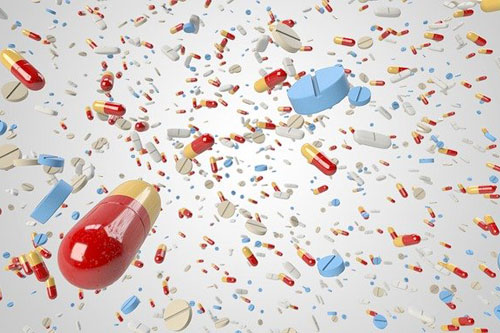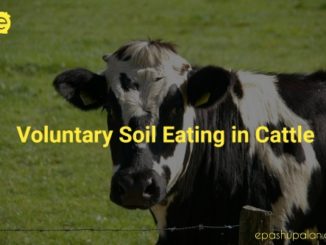Antibiotics are wonderful medicines in fight against deadly microbial infections since its invention. Antibiotics save millions of lives per year around the world. Devastating pandemics like cholera, tuberculosis took millions of lives prior to its invention. Therapeutic antibiotics are providing physicians and veterinarians a magical weapon to treat infections that once considered untreatable and lethal. Therapeutic antibiotics are prescribed by physician after thorough clinical investigation like cultural examination and sensitivity testing and therefore carries little chance of antibiotic resistance development. Except for sub lethal dosing and multi drug resistant (MDR) strains of certain organisms like Mycobacterium tuberculosis resistance issue arising in human treatment is deemed to be rare.
Problem area
Prophylactic use of antibiotic is rampant in livestock, fishery and poultry industry. In poultry and dairy industry various classes of antibiotics are used as Antibiotic Growth Promoters (AGP). The use of AGPs is a severe concern from food safety and public health perspective as their use is neither regulated nor are safety residual limits fixed. Residual concentration of antibiotics in egg, milk and meat products are severe health hazard as these might help emergence of resistant bacteria. AGP’s are gut acting antibiotics acting against enteric pathogens like E coli, Salmonella and Clostridium. These are bacteriostatic rather than bactericidal as they act mainly on cell wall by inhibiting peptidoglycan synthesis and disrupting lipopolysaccarides. Disruption of cell wall exposes the prokaryotic genetic material which can be up taken by another bacterium. Uptake of genetic material can transfer resistant genes form one bacteria to another.

Once resistance is acquired by an organism, it can further contaminate environmental resources necessary for our livelihood. Contamination of surface and groundwater can pose serious public health concern. Entry of resistant pathogen in human and animal food chain may further complicate the problem. Resistant pathogens having zoonotic potential may become endemic depending climatic conditions of an area and will be a recurring problem for health care system. Antibiotics that once regarded as curative drugs of choice become obsolete with evolution of resistance genes in resistant pathogens and necessitate developing newer generations of antibiotics. Patients suffering from severe ailments and geriatric diseases once acquire these resistant pathogens may induce severe cytokine storm which is often fatal.
Adaptive immune response is all about presentation and recognition of antigenic epitope to major histocompatibility pathways (class 1 and class 2). Final product is presented to either B cells receptors or T cell receptors and thereby immune response against a pathogen is generated. Resistant pathogen with newly acquired genetic potential alters the structure of antigenic determinants (epitopes) and thereby alters whole antigen presentation and processing pathway. Result of which is either cytokine storm for the new pathogen or rare humoral immune response (as the organism is new to the immune system). Case fatality in such scenario is dependent on the virulence factor acquired by the resistant organism. Less virulent resistant organisms generally develop chronic ailment with higher secondary attack rate.
Why organisms acquire resistance
Pharmacodynamics and pharmacokinetics of any antibiotic plays major role in antimicrobial inhibition and antibiotic resistance development. After systemic antibiotic administration when peak plasma concentration is achieved (with proper dosing) and repeat dose is administered depending on plasma half life, organism is either killed or further growth is inhibited.
- With sub therapeutic dosing peak plasma concentration is never achieved and thereby microorganisms escape killing and acquire resistance.
- Repeat dose administered after fall of plasma half life concentration is not lethal and microorganisms acquire resistance.
Mechanism of acquiring resistance
When organisms escape killing by a particular antibiotic it often become resistant to that antibiotic. The reason lies in genetical makeup of the organism. Bacteria are prokaryotic organisms devoid of true nucleus (without nuclear membrane) and all genetic information is found in its plasmid. Bacterial plasmids are extra nuclear circular DNA material. It encodes all information like infectivity, survivability, multiplication, mutation etc. Plasmids are prone to genetic recombination (this property is used in recombinant DNA technology) with deletion and substitution of gene fragments. Whenever bacteria face hostility e.g. antibiotic use they can donate a particular DNA fragment encoded for its infectivity and survival to another bacterium. Same way resistant genes encoded for particular antibiotic resistance can be donated to another bacterium which also becomes resistant.
Antibiotic resistance and food safety
All AGP’s and therapeutic antibiotics have a defined withdrawal period in dairy and meat animals. In dairy animals any therapeutic antibiotic is released within 24 hours in milk either as metabolite or as antibiotic itself. Majority of antibiotics (ex: gentamicin, beta lactums) are heat stable and are not destroyed by pasteurisation temperature. Consumption of such milk may create resistant bacteria in human. Similar is the case in meat animals. Although a withdrawal period of 7 days is recommended in meat animals which itself is inadequate; meat animal antibiotic withdrawal is nowhere followed in India.
Use of AGP’s in poultry is not regulated in India. Excessive and regular use of AGP’s in poultry pose serious health hazard with serious environmental contamination with resistant organisms (super bugs). Possible mixing of litter material from poultry houses with groundwater, stream water and reservoir water can contaminate potable water sources with resistant enteric pathogens and thereby pose serious threat to public health.
How to mitigate the concern
Antibiotic resistance issue is half man made and half evolutionary. Evolutionary aspect of acquiring resistance by microbes is not in our hand, so is the case for therapeutic antibiotics, the use of which we can’t stop. However man made antibiotic resistance have solutions; for which we need to formulate multipronged strategies.
Antibiotic Growth Promoters use in animals and poultry can be substituted with multipronged strategies. Rearing of animals and poultry with bio security measures can decrease antibiotic dependence to a great extent. Choice of bio security products should be such that these are environment friendly yet efficacious.
- Use of clean drinking water for animal and poultry can reduce antibiotic use to a large extent as enteric waterborne infections are the main problem area where antibiotics use are rampant.
- Clean feed is important for clean meat and milk production. Feed ingredients with higher microbial load necessitate use of antibiotics. Avoiding contaminated feed ingredients we can ensure clean meat and milk production without antibiotic use.
- Uses of probiotics instead of AGP’s are giving promising results. Probiotics are beneficial bacteria effectively controlling enteric pathogenic bacteria load by competitive exclusion phenomena.
- Prebiotics in feed are important as these are food for beneficial bacteria. Prebiotics help flourish beneficial enteric bacteria and thereby decrease pathogenic outbreak and AGP’s use.
- Use of essential oils and phytobiotics instead of AGP’s can help solve the problem to a near entirety. Essential oils have lipo-polysaccharide dissolving ability. Lipo-polysaccharide is a major constituent of gram negative bacterial cell wall (90 percent) and a minor constituent of gram positive cell wall (10 percent). Unlike antibiotics which expose nuclear material for uptake by other bacteria, essential oils and phytobiotics act on the exposed cell constituents and nuclear material by encapsulation so that resistant gene transfer cannot occur.
- Bacteriophages which multiply on selective bacteria can be effectively used in livestock and poultry. Bacteriphages with their multiplication inside bacteria cause lysis of bacterial cell. Bacteriophage can effectively substitute AGP’s use without any untoward effect.
- Therapeutic efficacy of antibiotics should be determined prior to administration. Sensitivity testing can reduce emergence of resistant bacteria when antibiotics are used for treatment purpose.
- Therapeutic antibiotics when used should have standard withdrawal period for meat and milk. Residual concentration of antibiotic should be determined in milk and meat by laboratory testing to minimize the threat and ensure public health.
Awareness of antibiotic resistance and associated food safety hazards is in very primitive state in our country. Emphasis on formulating standard safety parameters of livestock products where antibiotic use is rampant can reduce antibiotic resistance. Setting up of food safety laboratories at community level and strict adherence to safety parameters in livestock products for any antimicrobial presence can help mitigate the antimicrobial resistance problem.






3 Trackbacks / Pingbacks